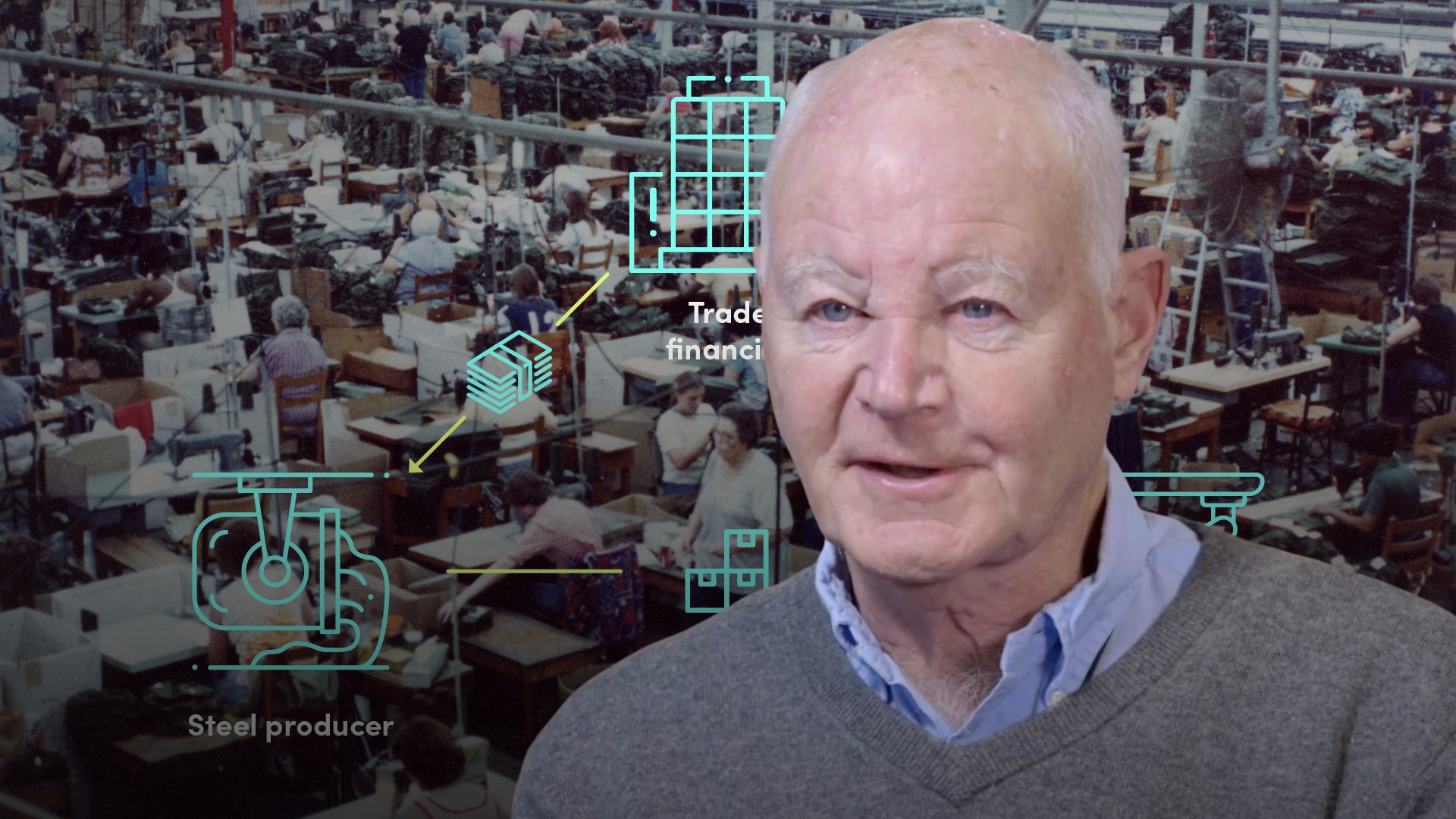
Real World Use Cases of the IOTA Tangle

Brian Marcel
35 years: Financial technology
In the final video on Brian's series about the Blockchain alternative, the Tangle, he explores some typical real-world uses for this alternative form of distributed ledger technology, including preventing counterfeit goods and improving the supply chain.
In the final video on Brian's series about the Blockchain alternative, the Tangle, he explores some typical real-world uses for this alternative form of distributed ledger technology, including preventing counterfeit goods and improving the supply chain.
Subscribe to watch
Access this and all of the content on our platform by signing up for a 7-day free trial.

Real World Use Cases of the IOTA Tangle
11 mins 46 secs
Key learning objectives:
Identify the applications of the Tangle
Understand how to decide whether the DLT is the right solution for you
Overview:
The Tangle has a wide variety of applications that include solving the issue of counterfeit goods, uses in global trade finance, data management, logistics, supply chains and smart applications.
Subscribe to watch
Access this and all of the content on our platform by signing up for a 7-day free trial.
In what ways does the Tangle apply to ethical consumers?
Many consumers have become very attached to brands, especially if they’re ethical and have a great story. In fact, food and fashion provenance are getting traction as the consumer wants to make sure the goods are ethically produced, and in some applications they can read a story about the farmer or food producer. The Tangle provides the brand with a platform to create a mobile application easily accessed by the consumer who can scan a barcode on the product and see for example the following:- Name of Cow: Dolly
- Name of Farm: South Kent Farm
- Date Delivered to Outlet: 20/1/2021
- Date Sold to Customer: 21/2/2021
- Expiry Date: 24/2/2021
How does the Tangle deal with the issue of counterfeit goods?
The Tangle technology enables the ability to authenticate original products from counterfeits. For example, pharmaceuticals, automotive spare parts, fashion and perfume. Every transaction will have a unique trace on the Tangle, and this is how the system becomes trusted and so consumers will know that the product has to have been authenticated, and so counterfeit products will not appear on the Tangle.What are the disadvantages of the traditional supply chain?
- Emails, phone calls and paper documents are the daily details of moving goods
- Information is delivered bilaterally and retyped into new systems with the introduction of errors and loss of data integrity and authenticity
- Multiple data formats are used and are often not compatible with one another
- Actors are unable to automatically broadcast/receive notification of events to relevant parties. This generates delay, inefficiencies and loss
How can the Tangle assist in improving the supply chain?
Tangle can assist in shortening the supply chain, creating efficiencies, reducing over payments and invoicing inaccuracies. The use of the Tangle as a data transport layer provides a single version of truth where everyone can update the status of consignment and everyone is accountable for updates, thus avoiding the multiple data silos within each actor.What are the uses of the Tangle in global trade finance?
Today, the cost of capital in developing countries is very high and producers normally wait a minimum of 6-12 weeks before receiving payments. To bridge this gap, the producers take trade finance loans with banks that provide them interests based on the risk profile of the small producers. With the Tangle, the risk of getting paid can be transferred to the buyer and their cost of capital, which is much lower than the small producers.We will likely see that authentication of various types of certificates will be one of the first wider aptin in global trade. Because the Tangle provides immutability and traceability back to the issuer of the certificates, these can be stored and trusted and accessed anywhere in the world via a smartphone.
What are the uses of the Tangle in data management?
- Provides immutability and accountability
- No centralised database - the technology allows for data producers to manage access privileges for who can see what. Thus, in a large ecosystem of users, there is no need to have a central database to collaborate. Hence, there is no risk of having one entity in the middle who can either manipulate or take advantage of data.
- The protocol uses encryption and quantum-secure principles to ensure the highest level of security
- The technology enables scalability as it caters for a high-volume of transactions in international trade
- The transactions are relatively costless
What are some logistical applications of the Tangle?
Applicable to returnable containers used for example in transporting food to supermarkets that have to be identified and returned to suppliers which would otherwise get stolen, lost or returned damaged.What are the ‘smart’ applications of the Tangle?
Smart mobility - Where a car, for example, can charge itself using a cryptocurrency token and pay directly for its electricity thus avoiding a third party. An example of this is the IOTA/Jaguar Land Rover initiative. There is also smart energy where you can choose who to buy your energy from based on who provides the most environmentally clean fuel.How can you decide if a DLT solution is right for you?
- Is there a need for a shared common database?
- Are multiple parties involved?
- Do the parties involved have conflicting incentives and/or mistrust each other?
- Are there differences in the rulers that govern these parties?
- Is there a need for an objective, unchangeable log of records?
- Do the rules behind transactions rarely change?
Subscribe to watch
Access this and all of the content on our platform by signing up for a 7-day free trial.

Brian Marcel
There are no available Videos from "Brian Marcel"



























